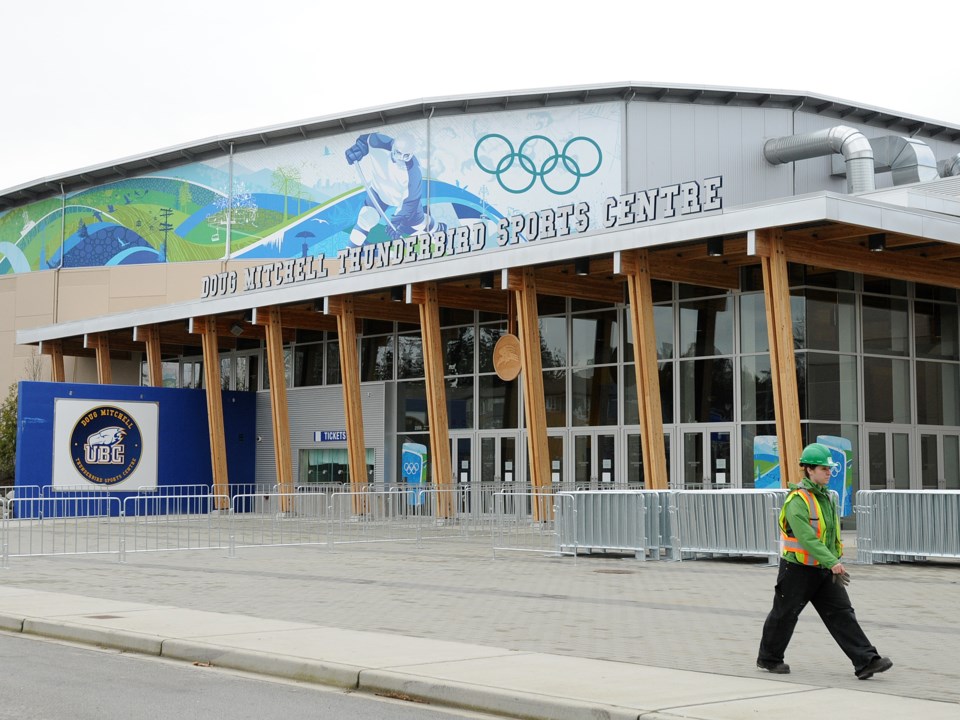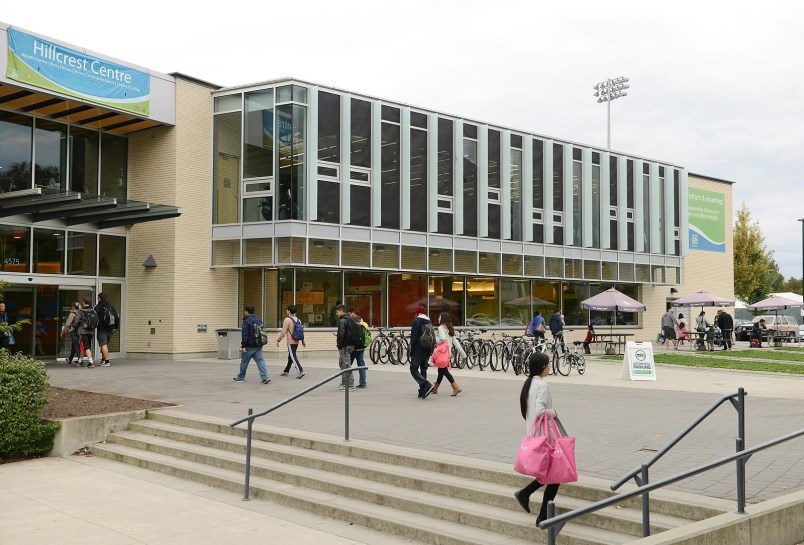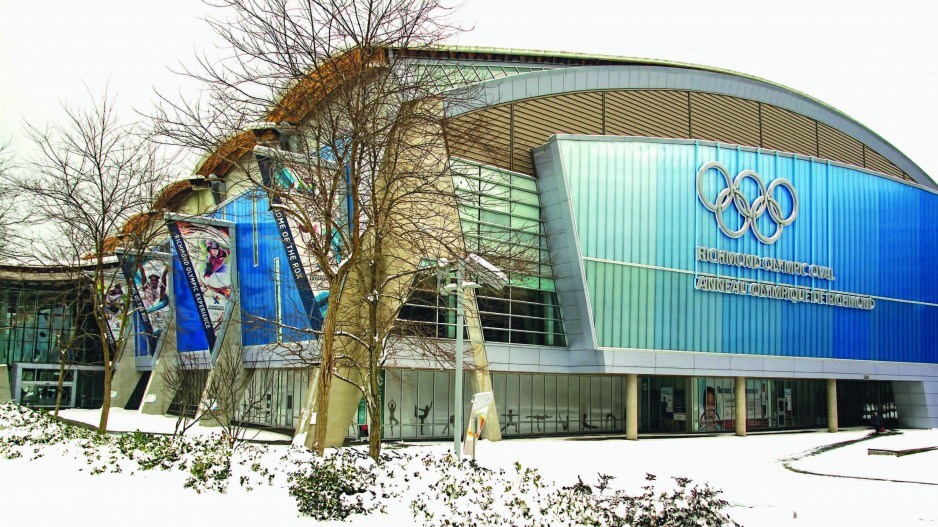In assessing the legacy of the 2010 Winter Olympics, it’s noteworthy that few if any of the event’s purpose-built facilities have turned into the kind of white elephants that have plagued other host cities.
In fact, operators of the venues left in Metro Vancouver — the University of British Columbia’s (UBC) Doug Mitchell Thunderbird Sports Centre (ice hockey), Vancouver’s Olympic/Paralympic Centre, now the Hillcrest Centre (curling) and two other community ice rinks (practice facility for figure skating and short-track speedskating), as well as the high-profile Richmond Olympic Oval (speedskating), which was the 2010 Games’ most expensive facility at $178 million — report that all facilities are doing brisk business, generating surpluses or fulfilling community needs as budgeted.
In an interview with Business in Vancouver, John Furlong, who was president and CEO of the Vancouver Organizing Committee for the 2010 Olympic and Paralympic Winter Games (VANOC), said that the 2010 Games were ahead of the curve in that the International Olympic Committee (IOC) is now concerned more than ever with future host cities planning properly to minimize the waste of Olympic facilities that are abandoned after the Games. That was something built into planning of the Vancouver Games from Day 1, Furlong said — and the current financial well-being of the facilities reflects those goals.
Also check out: Vancouver 2010: Olympics legacy - INTERACTIVE MAP
“We get called all the time to do work for the IOC,” Furlong said. “I just came back from Los Angeles [host to 2028 Summer Games] to give a workshop on the approach we took to vision; we did the same for Paris [host for 2024]. We did the same for Beijing [host for 2022 Winter Games]. So we are viewed through a lens that we got it right… and we hit all the markers we set out to hit.”
One of the more prominent examples of VANOC’s principle of keeping the overall Games in the black is also the most controversial. The Richmond Olympic Oval has been in the public eye for its cost — almost three times VANOC’s $63 million budget for a speedskating facility.
There is also public debate around the facility not being able to host future speedskating events because the settling of the river delta soil beneath the building has impaired its levelness.
But Furlong said VANOC officials recognized the challenges early; the group identified the speedskating venue, along with the Whistler Sliding Centre and the Whistler Olympic Park, as venues that would have problems generating enough revenue to be sustainable post-Games without proper support. The solution? Think bigger, Furlong said.
“Richmond, for me, is just a prime example of how you can leverage,” he said. “We had $63 million to build the Oval. That was if we built it in 2003, but we were building it for 2010. We realized that venue would be viewed by the world — the way we originally designed it — as inadequate.
“It would be a not-so-great legacy. So we thought what if we took our $63 million and went shopping? We said to cities, ‘Listen, think about your long-term interests. We have $63 million to spend, and we needed an oval for the Games… Post-Games, we are OK with wherever it goes. So if you can see a plan that takes care of your long-term needs, and you want to invest in that while helping us with what we need to do, we’d like to talk to you about a partnership.’”
The City of Richmond ended up auctioning the land surrounding the oval site to Aspac Developments for $141 million, then used part of the funds to build the oval as a facility that would serve multiple needs after the Games. Today, the building houses everything from ice rinks and sports courts to a climbing wall and a rowing tank, and plays host to 50 provincial, national and international events every year.
Gerry De Cicco, the oval’s assistant general manager and director of sport services, said the building is now the training ground for several national teams, adding that about 80 per cent of the facility’s 6,000 members are Richmond residents. In 2019, the oval had 1.1 million visits, ranging from top athletes to 3,000 kids during summer camp programming.
De Cicco added that the oval generated more than $10 million in revenue in 2019, with additional funding from the Games’ legacy trust (between $2.5 million and $3 million per year) giving the oval an “annual surplus.”
“Operationally, the oval continues to be highly sustainable and has become a catalyst for the creation of a thriving neighbourhood,” he said.
The oval isn’t alone in that sense. At UBC’s Thunderbird Arena on Jan. 17, a sold-out crowd of 5,000-plus students and alumni packed into the rink for the school’s annual Winter Classic game versus the Manitoba Bisons.
Kavie Toor, UBC’s senior director of facilities, recreation and sport partnerships, said events like the Winter Classic, Davis Cup tennis events, concerts and the Skate Canada national championships wouldn’t be possible without the new facility.
The Doug Mitchell Thunderbird Sports Centre allows UBC’s athletic department to self-generate 60 per cent of its revenue, significantly higher than the average of 30 per cent for Canadian universities. The building itself generates a net annual surplus of close to seven figures — which goes back into supporting varsity and community sports initiatives.

“What sets it apart is the diversity and flexibility of use,” Toor said. “We can convert it to a tennis court or a skating event or a concert, sometimes all within the same week... That’s the beauty of the legacy; there’s no way the university, on its own, would have the funding model or the ability to take that risk without hosting an Olympic Games. You wouldn’t have the canvas to draw fantastic community programs.”
In Vancouver, Hillcrest Centre is among the city’s most popular community facilities. Its aquatic centre is constantly busy on weekdays and weekends, and the ice rink, gymnasium, curling rink and library all see significant use from the public, said Vancouver Park Board chair and commissioner Camil Dumont. He added that while a lot of focus falls on Hillcrest, the Olympics also brought the $15.9 million Trout Lake Community Centre — site of figure skating practices – and the $14.9 million Killarney Community Centre — home of short-track speedskating practices – to a city in dire need of new public sports facilities.
“What this allows for is the reinvention of spaces,” Dumont said, adding that the services building at the Olympic Village also became the Creekside Community Centre. “Basically, it’s such a struggle to build new community centres or to reinvest in existing ones. You will see around the city a lot of facilities from a bygone era, so when something so significant as the Olympics happen, if you can hitch your wagon to that and get community amenities that are long-lasting, it’s a positive outcome.”
Dumont added that though there were challenges during the facilities’ construction more than a decade ago, the recreational opportunities afforded by these sites now would not have existed otherwise.
“We are using all these facilities to capacity… They are all very, very busy, and to be honest, I’d imagine we could use even more, and they would also be used up. It’s just such a valuable part of people’s lives that there are no shortage of users.”

The story, however, is slightly different once you leave Metro Vancouver. The two main Whistler facilities built for the Games — the sliding centre and Olympic park — are today managed by non-profit community group Whistler Sport Legacies, and the facilities depend on legacy trusts to supplement ticket revenue for their operational needs, said president and CEO Roger Soane.
The sliding centre, which hosted the 2010 luge, bobsled and skeleton events, is especially hard to turn into a self-sustaining operation due to the niche nature of the sports, Soane said, but he added that “the world’s fastest track” does offer tourists in Whistler a unique experience that isn’t offered by other locations, in addition to serving as a key training facility for local, national and international competitors.
The Olympic park, meanwhile, has some real potential, he said. The cross-country skiing, biathlon and ski-jump venue now houses the only running ski jumps in Canada (after Calgary closed its facility due to a lack of funding), and the vast snowy countryside setting offers visitors snowshoeing, tobogganing and skiing opportunities.
“To get to Whistler Olympic Park from Vancouver, you also pass a number of other snow destinations,” Soane said. “So it’s not as unique an experience, people may think, until they actually come here and experience it. This is very different to other offerings; to me, it is the best-kept secret in the Sea-to-Sky corridor. We are finding a lot of visitors from Vancouver from the Asian communities really enjoying the park because it’s not intimidating.”
Plans are underway to try to push the revenue front, officials say — a zoning application is in the works that aims to bring camping and RVs to the Olympic park in summer months, but the challenge remains the lack of funds, Soane said.
In the meantime, he takes comfort in the Olympic park and the sliding centre’s support for Canadian athletes pursuing these sports, while they also provide community recreation and tourist experiences, as a pillar of the 2010 Games’ legacy in Whistler.
“Our No. 1 men’s luger in Canada, Reid Watts, was raised here and came to the tracks in 2010 as a kid,” Soane said. “He fell in love with the sport there, and there are a number of different athletes like him who have grown up here on these Olympic venues who have become the next Olympians. I think that is the true legacy of the facilities… when you see locally grown athletes reach the world stage.”



